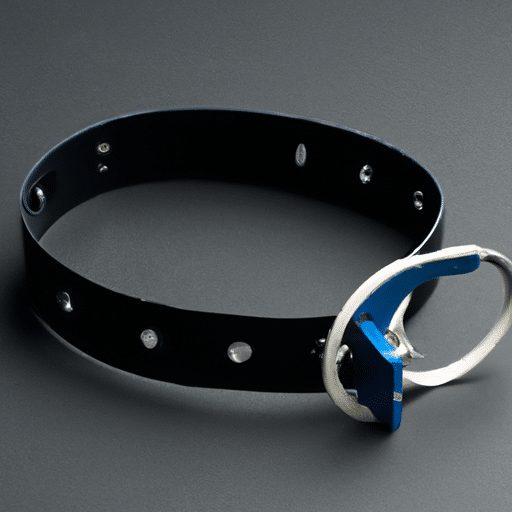In the world of dog training, finding the right tools and techniques to effectively address excessive barking is crucial. One such tool that has gained popularity is the bark collar. However, determining the appropriate situations to use this device can be a gray area for many dog owners. In this article, we will explore the different scenarios where using a bark collar may be beneficial, providing insights and guidance for those seeking a solution to their furry friend’s barking tendencies.
What is a bark collar?
A bark collar is a device that is designed to help control and manage a dog’s barking behavior. It is worn around the neck of the dog and typically detects vocalizations or vibrations that indicate barking. Once activated, the bark collar delivers a correction or deterrent to discourage the dog from barking. There are different types of bark collars available, each utilizing various methods to interrupt or modify the dog’s barking behavior.
Understanding the purpose of a bark collar
Bark collars serve two primary purposes: training excessive barking and preventing nuisance barking. Additionally, they can also be used to address underlying behavioral issues that may be contributing to the excessive barking.
Table of Contents
Training excessive barking
When a dog exhibits excessive barking, it can be a challenge to control or manage their behavior. Excessive barking can be caused by various factors such as boredom, separation anxiety, territorial behavior, or simply learned behavior. Bark collars can provide a consistent and immediate correction that helps the dog associate their barking with an undesirable consequence. Through repetition and consistent use, the dog can learn to reduce or eliminate excessive barking.
Preventing nuisance barking
Nuisance barking refers to barking that disturbs neighbors, household members, or violates noise ordinances. This type of barking can be a result of a dog’s territorial nature, alertness, or boredom. Bark collars can be an effective tool in curbing nuisance barking by providing a deterrent whenever the dog engages in such behavior. This helps maintain peace and harmony within the neighborhood and prevents unnecessary conflicts with neighbors.
Addressing behavioral issues
In some cases, excessive barking may be a symptom of underlying behavioral issues such as separation anxiety, fear, or aggression. Bark collars can be used as part of a comprehensive approach to address these behavioral issues. By providing consistent feedback and interruptions, bark collars can help redirect the dog’s focus and assist in the process of behavior modification.
Determining if a bark collar is the right solution
Before deciding to use a bark collar, it is important to carefully assess the severity of the barking problem and explore alternative training methods. Consulting with a professional trainer can also provide valuable insights and guidance.
Assessing the severity of the barking problem
It is crucial to determine the extent and frequency of the barking problem. If the barking occurs occasionally or in specific situations, alternative training methods may be more appropriate. However, if the barking is excessive, disruptive, and persistent, a bark collar may be considered as a solution.
Considering alternative training methods
Bark collars should not be the first line of defense when addressing barking issues. Positive reinforcement training techniques, such as reward-based training or desensitization exercises, should be attempted before resorting to a bark collar. These methods focus on teaching the dog appropriate behavior and rewarding them for staying calm and quiet.
Consulting with a professional trainer
Seeking the guidance of a professional trainer can be immensely helpful in determining the best approach to address your dog’s barking behavior. A professional trainer can assess the underlying causes of the barking and suggest appropriate training methods or recommend the use of a bark collar, if necessary.
Types of bark collars
There are several types of bark collars available in the market, each utilizing different mechanisms to discourage barking.
Static correction collars
Static correction collars, also known as electric collars, deliver a small static electric shock to the dog when it barks. The intensity of the shock can usually be adjusted to suit the dog’s sensitivity. The shock is designed to startle the dog and deter it from barking.
Citronella collars
Citronella collars use a spray mechanism to release a burst of citronella scent whenever the dog barks. Dogs generally find the smell of citronella unpleasant, and the sudden burst of scent can interrupt their barking behavior.
Ultrasonic collars
Ultrasonic collars emit a high-frequency sound that is inaudible to humans but can be heard by dogs. When the dog barks, the collar detects the sound and emits an ultrasonic tone, which serves as a deterrent to the dog.
Vibration collars
Vibration collars work by sending vibrations through the collar when the dog barks. These vibrations are meant to distract the dog and discourage barking. Vibration collars are often a preferred option for dogs who are sensitive to other types of corrections.
Factors to consider when choosing a bark collar
When selecting a bark collar, it is important to consider various factors to ensure it is suitable for your dog’s needs and preferences.
Breed and size of the dog
Different breeds and sizes of dogs may have different sensitivities and tolerance levels. It is important to choose a bark collar that is appropriate for your dog’s breed and size to ensure the correction is effective without causing unnecessary discomfort.
Temperament of the dog
The temperament of the dog plays a significant role in determining the type of bark collar that will be most effective. Some dogs may be more responsive to certain types of corrections, while others may find them intimidating or frightening. Understanding your dog’s temperament will help you choose the most appropriate bark collar.
Sensitivity levels and adjustability
Bark collars offer different sensitivity levels and adjustability options to cater to individual dogs’ needs. It is essential to choose a bark collar with adjustable settings, allowing you to customize the correction level to suit your dog’s specific barking behavior.
Comfort and fit
A bark collar should be comfortable for the dog to wear throughout the day, especially if it is intended for extended use. Look for adjustable collars that can be properly fitted to your dog’s neck size. It is also important to ensure the materials used are of high quality and do not cause irritation or discomfort.
Battery life and rechargeability
Consider the battery life and rechargeability of the bark collar. Long-lasting batteries and rechargeable options are preferable to avoid frequent replacements or running out of power at inconvenient times.
Water resistance
If your dog enjoys water activities or lives in a rainy climate, opting for a water-resistant bark collar is essential. This ensures the collar can withstand exposure to moisture without malfunctioning or causing discomfort to the dog.
Using a bark collar safely and effectively
To maximize the effectiveness and safety of using a bark collar, it is important to follow certain guidelines.
Reading and following the manufacturer’s instructions
Always read and follow the manufacturer’s instructions for proper and safe use of the bark collar. Each type of bark collar may have specific guidelines and recommended usage to ensure the desired results.
Gradual introduction and desensitization
Introduce the bark collar to your dog gradually and allow them to get accustomed to wearing it. Start with short periods of time and gradually increase the duration. This helps the dog adjust to the sensation of wearing the collar and reduces any potential stress or discomfort.
Monitoring the dog’s reaction
Observe your dog’s response to the bark collar and pay attention to any signs of distress or discomfort. If your dog shows signs of extreme distress or unusual behavior, discontinue the use of the collar and consult with a professional.
Regular maintenance and cleaning
Maintain the bark collar by regularly cleaning it and inspecting it for any signs of damage. This helps ensure the collar functions properly and remains comfortable for your dog to wear.
Appropriate situations to use a bark collar
There are certain situations where using a bark collar is considered appropriate and beneficial.
Excessive barking that disrupts neighbors or household members
If your dog’s barking is causing disturbances among your neighbors or fellow household members, a bark collar may be a suitable solution. It can help address the excessive barking and restore peace within your environment.
Barking that puts the dog’s safety at risk
In situations where the dog’s barking poses a safety risk, such as alerting potential intruders in a high-crime area, a bark collar can effectively discourage the behavior and protect the dog from potential harm.
Barking that cannot be controlled through alternative methods
If you have exhausted other training methods and the barking problem persists, a bark collar can be considered as a last resort. However, it is important to ensure that the underlying causes of the barking have been properly addressed before relying solely on a bark collar.
Inappropriate situations to use a bark collar
While bark collars can be effective in certain situations, there are times when they should not be used.
Punishment for other behavioral issues
Bark collars should not be used as a form of punishment for other behavioral issues. It is essential to address the root causes of these behavioral issues through positive reinforcement training techniques or seek professional guidance.
Barking caused by fear or anxiety
If a dog’s barking is a result of fear or anxiety, a bark collar may not be the appropriate solution. Fear- or anxiety-induced barking requires a different approach, such as desensitization or counter-conditioning exercises, to address the underlying emotional triggers.
Barking due to medical conditions or pain
Barking can sometimes be a sign of an underlying medical condition or physical discomfort. It is crucial to rule out any potential medical issues or pain as the cause of the barking before considering a bark collar.
Benefits of using a bark collar
When used appropriately, bark collars offer several benefits in managing and addressing excessive barking.
Effective way to address excessive barking
Bark collars provide a consistent and immediate correction that helps the dog associate their barking with an undesirable consequence. This can facilitate behavior modification and reduce or eliminate excessive barking over time.
Quick and consistent feedback
Unlike some training methods that may require the presence or intervention of a human, bark collars deliver immediate feedback to the dog whenever they engage in excessive barking. This allows for quick correction and reinforcement of desired behavior.
Can be used in various environments
Bark collars can be used in a variety of settings, including indoor and outdoor environments. This makes them a versatile tool for addressing excessive barking regardless of the context.
Potential drawbacks of using a bark collar
While bark collars can be effective, it is important to consider the potential drawbacks associated with their use.
Possible discomfort or distress for the dog
Some dogs may find the sensations or corrections delivered by bark collars uncomfortable or distressing. It is important to monitor the dog’s reaction closely and discontinue use if there are signs of extreme distress or anxiety.
Limited effectiveness for some dogs
Not all dogs respond equally to bark collars. Some dogs may be less responsive to the deterrent or correction provided by the collar, making it less effective in curbing their barking behavior.
Dependency on the bark collar
In some cases, dogs may become reliant on the presence of a bark collar for behavior control. Over time, they may become less responsive to other training methods or corrections, making it challenging to address barking issues without the collar.
In conclusion, bark collars can be a helpful tool in training and managing a dog’s barking behavior. They can be used to address excessive and nuisance barking, as well as some underlying behavioral issues. However, it is important to consider the severity of the barking problem, explore alternative training methods, and consult with a professional trainer before deciding if a bark collar is the right solution. When choosing a bark collar, factors such as the dog’s breed, temperament, sensitivity levels, comfort, and fit should be taken into consideration. Using a bark collar safely and effectively involves reading and following the manufacturer’s instructions, gradual introduction and desensitization, monitoring the dog’s reaction, and regular maintenance. While there are appropriate situations to use a bark collar, such as excessive barking that disrupts neighbors or poses a safety risk, there are also inappropriate situations, such as using it as punishment or when barking is caused by fear or anxiety. Bark collars offer benefits such as effectiveness, quick feedback, and versatility, but they also have potential drawbacks, including possible discomfort for the dog, limited effectiveness, and dependency. Ultimately, the decision to use a bark collar should prioritize the well-being and individual needs of the dog, and not be solely relied upon as the sole method of addressing barking issues.






























